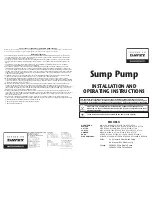
Model No. WA-9857
String Vibrator
21
®
Experiment 1:
Teachers’ Notes–Wave Speed
Equipment Notes
Clamps
Instead of table clamps and rods, you can use two C-clamps to fasten the String Vibrator and force
sensor to the table. Use a block or book to elevate the force sensor a few centimeters above the
surface of the table. Be careful when applying clamping pressure to the force sensor.
Balance
The density of the elastic wave cord is about 1.5 g/m, so it’s best to use a balance readable to 0.01
g. If you have a less-precise balance, have a long piece of cord available for students to measure
the length and mass of.
Sensors and Interface
This experiment calls for simultaneous data collection from a force sensor and a voltage sensor.
There are several sensor options available; contact Technical Support, or see the PASCO website
and catalog for more information. One convenient combination of equipment (which was used for
the sample data below) is:
•
PASPORT Force Sensor (PS-2104)
•
PASPORT Voltage/Current Sensor (PS-2115)
•
PowerLink interface (PS-2001)
•
DataStudio
®
software
Because of the variety of equipment that may be used, the instructions here do not go into detail
about collecting data. Students should be prepared to use the sensors, interface and software to:
•
Set up the hardware and software to collect data from voltage and force sensors (sensor setup)
•
Change the sampling rate of the sensors
•
Record data (data collection)
•
Display the data in a graph (display windows: adding an input)
•
Find the average value of a data set (Statistics)
In DataStudio, click on the Help menu, select search, and look up the underlined terms in the
index for detailed instructions.
Procedure Notes and Sample Data
The cord will stretch by a factor of about 2. If you don’t have enough lab space to accommodate
that length of cord, start with a shorter piece.
Unstretched Length (without knots) = 1.354 m
Mass = 5.74 g
Unstretched Linear Density = 4.24 × 10
-3
kg/m
Summary of Contents for WA-9857
Page 26: ......






































